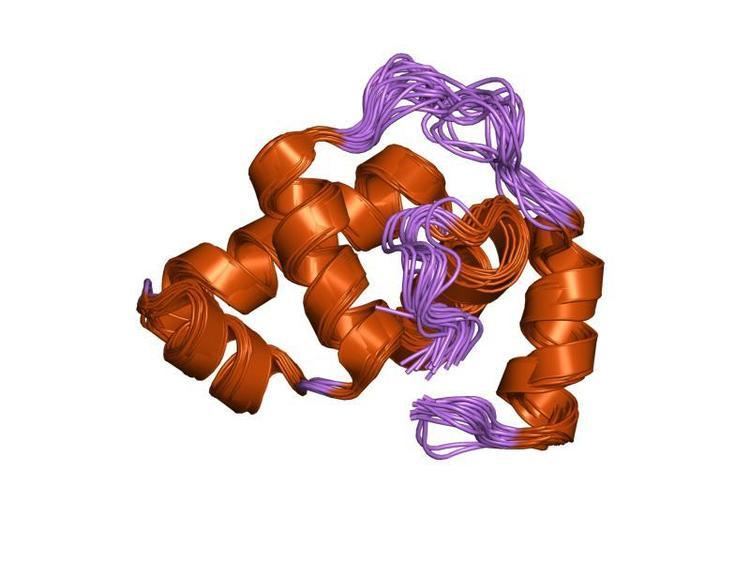Symbol GerE Pfam clan CL0123 PROSITE PDOC00542 | Pfam PF00196 InterPro IPR000792 SCOP 1rnl | |
 | ||
In molecular biology, the LuxR-type DNA-binding HTH domain is a DNA-binding, helix-turn-helix (HTH) domain of about 65 amino acids. It is present in transcription regulators of the LuxR/FixJ family of response regulators. The domain is named after Vibrio fischeri luxR, a transcriptional activator for quorum-sensing control of luminescence. LuxR-type HTH domain proteins occur in a variety of organisms. The DNA-binding HTH domain is usually located in the C-terminal region of the protein; the N-terminal region often containing an autoinducer-binding domain or a response regulatory domain. Most luxR-type regulators act as transcription activators, but some can be repressors or have a dual role for different sites. LuxR-type HTH regulators control a wide variety of activities in various biological processes.
The luxR-type, DNA-binding HTH domain forms a four-helical bundle structure. The HTH motif comprises the second and third helices, known as the scaffold and recognition helix, respectively. The HTH binds DNA in the major groove, where the N-terminal part of the recognition helix makes most of the DNA contacts. The fourth helix is involved in dimerisation of gerE and traR. Signalling events by one of the four activation mechanisms described below lead to multimerisation of the regulator. The regulators bind DNA as multimers.
LuxR-type HTH proteins can be activated by one of four different mechanisms:
1. Regulators which belong to a two-component sensory transduction system where the protein is activated by its phosphorylation, generally on an aspartate residue, by a transmembrane kinase. Some proteins that belong to this category are:
2. Regulators which are activated, or in very rare cases repressed, when bound to N-acyl homoserine lactones, which are used as quorum sensing molecules in a variety of Gram-negative bacteria:
3. Autonomous effector domain regulators, without a regulatory domain, represented by gerE.
4. Multiple ligand-binding regulators, exemplified by malT.
